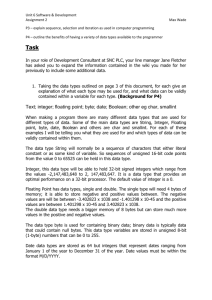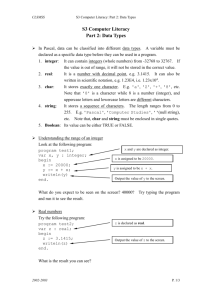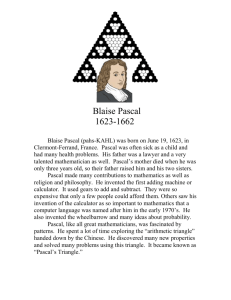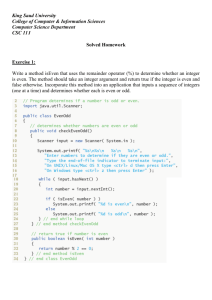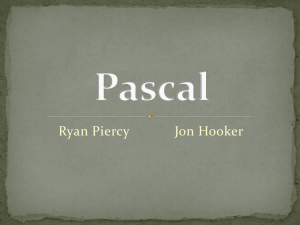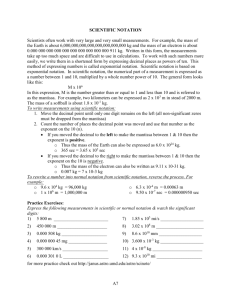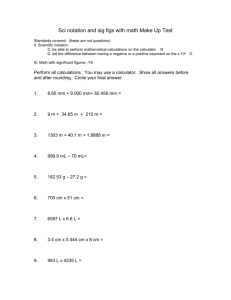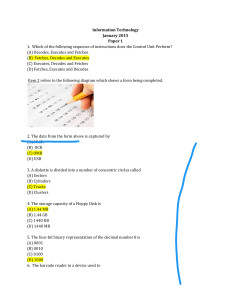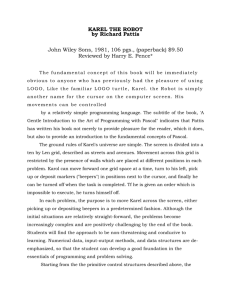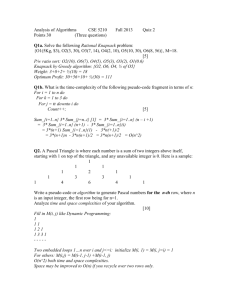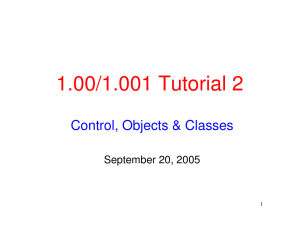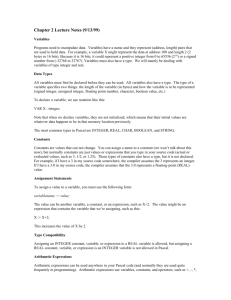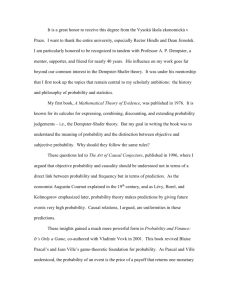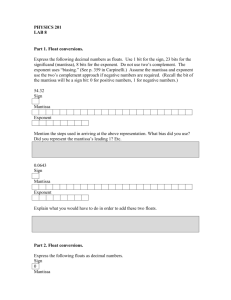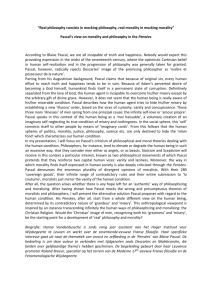P7 Variables and Dat..
advertisement
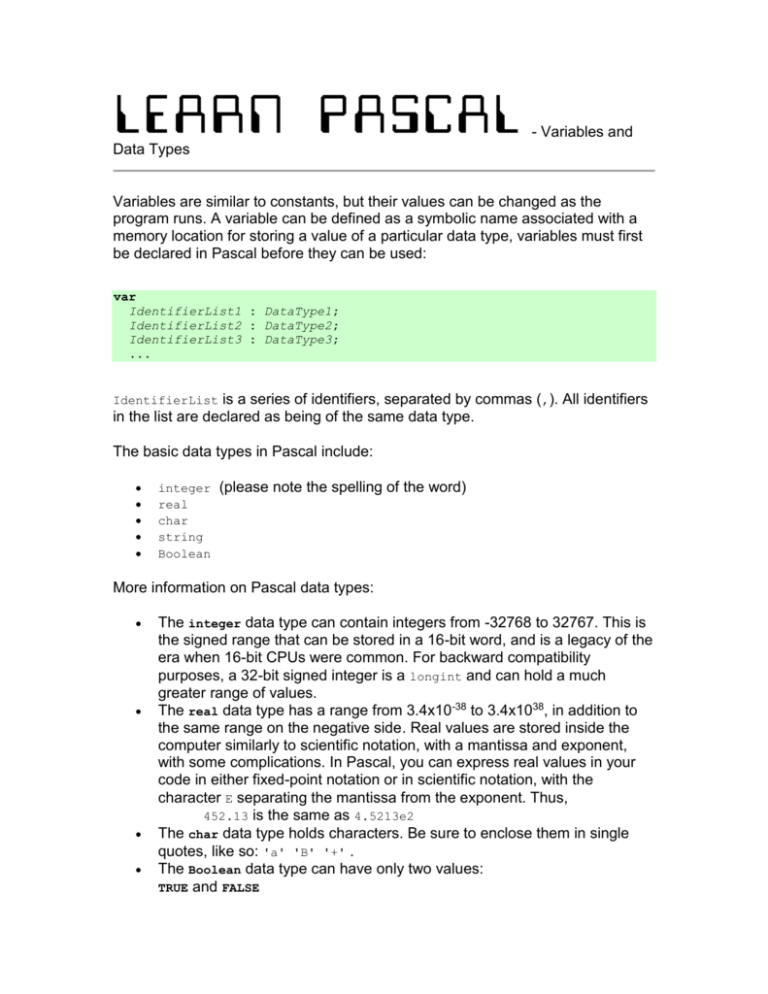
- Variables and Data Types Variables are similar to constants, but their values can be changed as the program runs. A variable can be defined as a symbolic name associated with a memory location for storing a value of a particular data type, variables must first be declared in Pascal before they can be used: var IdentifierList1 : DataType1; IdentifierList2 : DataType2; IdentifierList3 : DataType3; ... is a series of identifiers, separated by commas (,). All identifiers in the list are declared as being of the same data type. IdentifierList The basic data types in Pascal include: integer real char string Boolean (please note the spelling of the word) More information on Pascal data types: The integer data type can contain integers from -32768 to 32767. This is the signed range that can be stored in a 16-bit word, and is a legacy of the era when 16-bit CPUs were common. For backward compatibility purposes, a 32-bit signed integer is a longint and can hold a much greater range of values. The real data type has a range from 3.4x10-38 to 3.4x1038, in addition to the same range on the negative side. Real values are stored inside the computer similarly to scientific notation, with a mantissa and exponent, with some complications. In Pascal, you can express real values in your code in either fixed-point notation or in scientific notation, with the character E separating the mantissa from the exponent. Thus, 452.13 is the same as 4.5213e2 The char data type holds characters. Be sure to enclose them in single quotes, like so: 'a' 'B' '+' . The Boolean data type can have only two values: TRUE and FALSE An example of declaring several variables is: var age, year, grade : integer; circumference : real; Grade : char; DidYouFail : Boolean; country:string;
